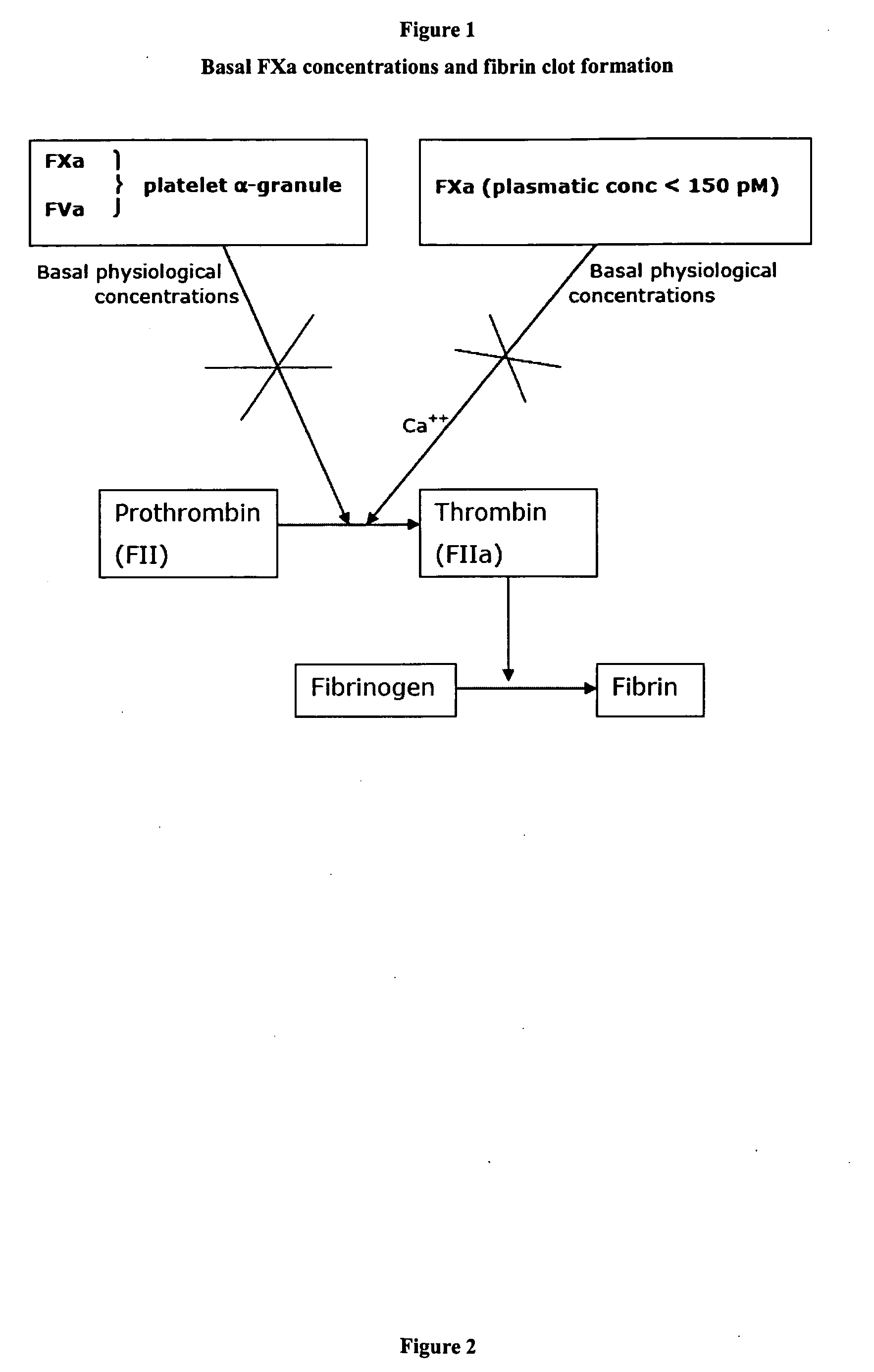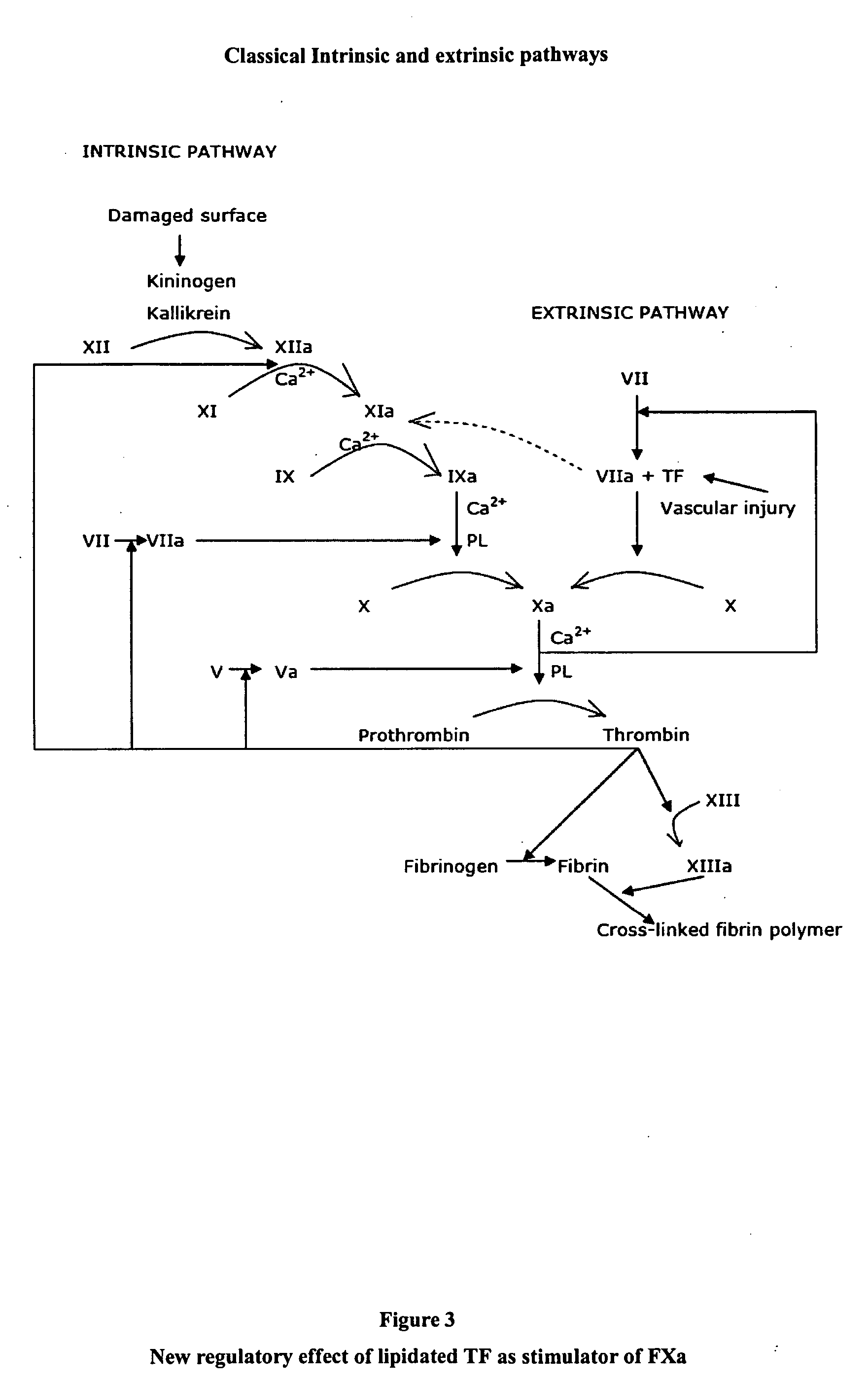Evidently in a context in which FVIIa is not present, as occurs in a
congenital deficiency of this factor, coagulation hypothetically will never take place since FX will not be activated at sufficient levels and, consequently, hemorrhagic manifestations should be fatal.
Murine models confirm this theory and FVII deficiency is incompatible with life, being accompanied by severe fatal hemorrhages.
However, congenital FVII deficiencies described in humans until now, are not always accompanied by hemorrhages.
Although acquired coagulation factor deficiencies are an unknown etiological entity also causing severe hemostasic problems, they are also one of the most important problems in multiple transfusions to which patients with congenital coagulopathies are subjected.
The currently available therapeutic arsenal in a mild / moderate or severe / fatal hemorrhage (by
surgery or external trauma) is very limited.
(7) Very dangerous side-effects
It is a high expensive and low available treatment that it must always be intravenously administered.
It is not useful to acutely treat an hemorrhage because it requires long administration protocols to be effective, and above all is a very dangerous treatment: 20% of hemophilic patients have developed
hepatitis, 5% HIV, and up to 15% present plasmatic antibodies against FVIII or FIX (acquired hemophilia) that requires special and very expensive substitutive treatments (immunosuppressant,
high doses of coagulation factors,
plasmapheresis, etc).
It is an expensive treatment inappropriate to be administrated in some bleeding episodes (i.e. epistaxis), troublesome for dental treatment, form unstable
fibrin clot, and as coagulation factor concentrates have the same potential dangerous side-effects.
They should not be used in patients who have never received human-derived blood products or those who are receiving treatment with recombinant FVIII or FIX because of the potential risks of human
viral transmission.
It is the most expensive treatment (average cost of 6,000 ε) only available for developed countries.
As coagulation factor concentrates, it must always be intravenously administered, has a very narrow therapeutic focus because it is only useful to treat their specific deficiency, is inappropriate to topically treat hemorrhages, is not useful to acutely treat an hemorrhage because it also requires long administration protocols to be effective, and although no human
viral transmission has been reported, the same percentage of acquired hemophilia has been described (up to 15% present antibodies anti FVIII or FIX).
As coagulation factor concentrates, public authorities greatly limit its use.
They have a narrow therapeutic focus this being its most relevant limitation.
Therefore, they are only useful in
healthy subjects, however when
fibrin clot is inappropriately formed (i.e. congenital coagulopathies, such as hemophilia, FVII deficiency) their therapeutic
efficacy dramatically decreases.
Moreover, they are not useful to acutely treat a hemorrhage because they also require long administration protocols to be effective.
The most important restriction for the use of these hemostatic agents is that they are inappropriate to be administrated in much kind of hemorrhages, such as epistaxis, dental, and surgical.
In conclusion, surprisingly there are no drugs available today useful for the
topical treatment of a simple episode of epistaxis or gingival dental bleeding after brushing one's teeth or simply due to an everyday wound caused by shaving, due to the punctured
vein in a blood extraction, or due to the wound from an
accidental fall in the street.
The problem obviously becomes greater when these patients suffer an external trauma or severe bleeding accident since their life is at serious risk.
All these therapies imply using the
parenteral route and, therefore, are not designed to be used with great frequency, as would be the case, for example, in any daily mild or moderate bleeding.
However, in the same experimental conditions, non-lipidated TF has demonstrated a complete lack of effect, which indicates that lipidization is necessary to achieve TF functionality (section 6.1 of the results).
In fact, it is well known that lipidated TF is active
in vitro conditions and their parenteral administration immediately initiates disseminated intravascular coagulation with fatal consequences.
To date, there are not data about the effect of both, lipidated and non-lipidated TF for single topical treatment of bleeding episodes.
Such a surprising and extraordinarily
effective treatment has not been described until now, because it was unobvious for any person skilled in the art that lipidated TF acts as a stimulator of FXa proteolytic activity.
 Login to View More
Login to View More 


